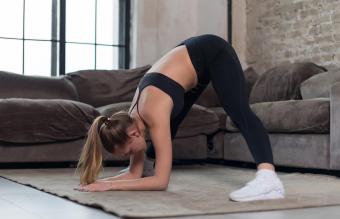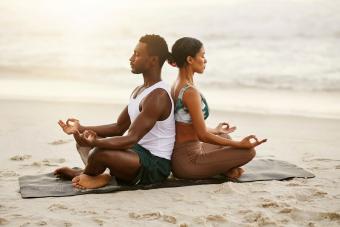
Most people are aware of the importance of incorporating stretching routines into their workouts. However, depending on your body type, some flexibility programs are more user friendly than others.
Add Stretching to Your Workout Routines
Your choice of flexibility program depends on:
- Body type
- Athletic needs
- Muscular imbalances
- Injuries
For example, a male bodybuilder will have a greater need for a static stretching program than a loose-jointed woman with minimal muscle tone will. An athlete may require some static stretching for tight muscles. However, to perform with efficiency, she will also require a significant amount of dynamic flexibility.
Dynamic Flexibility Programs
Dynamic stretching routines enhance the ability to bring a joint through a full range of movement while the body is in motion. Gary Gray, a renowned physical therapist and sports medicine expert, defines dynamic flexibility as the ability to take advantage of the right amount of motion at the:
- Right joint
- Right plane of movement
- Right direction
- Right time
As such, dynamic stretching routines consist of continued, fluid swinging movements. Most athletic teams use dynamic flexibility programs as a warm-up. In many cases, this type of stretching routine serves as a dress rehearsal for the muscles needed to perform their sport. For example, a golfer may perform a series of rotary movements for her upper body. A skier may imitate the ankle movements used in edging the ski. Since pre-game static stretching can over-stretch a muscle, dynamic stretching routines are replacing static warm-ups. However, after your game, weight-training session, or cardio workout, static stretching can prevent stiffness.
Static Stretching
While the terms "static stretching" and "passive stretching" are often used interchangeably, there is a distinct difference between the two. During static stretching routines, you bring your muscles to the farthest attainable range of motion, and then hold the stretch. Yoga poses are a form of static stretching.
Passive stretching makes use of a partner, who acts as an external force to assist in the stretch. For example, while you lie on your back and lift one leg, your partner can exert gentle force to assist you in bringing the leg closer to your body.
PNF Stretching
The term PNF stretching is an acronym for proprioceptive neuromuscular facilitation. While there are a number of ways of performing PNF stretching routines, two are the most common:
Hold and Relax
The second form of PNF works on a principle of opposition. When one muscle contracts, its opposite muscle group relaxes.
- Begin with a static stretch
- Release the stretch
- Perform a 15-second isometric contraction of the muscle group
- Relax for three seconds
- Perform another static stretch
Hold-Relax-Contract
For example, if you wanted to stretch your hamstrings using a PNF technique, you would begin with a stretch, and then isometrically tighten the front of your thigh. While the front of thigh or quadriceps is tightening, the hamstrings are automatically relaxing.

Foam Roller Flexibility Exercise
Styrofoam rollers are quickly gaining popularity amongst athletes, dancers and fitness enthusiasts. This technique, known as myofascial self release, combines flexibility exercise with massage. It is designed to release tension, without adding excessive muscle length. Myofascial self release works by placing a body part on the roller, and then gradually rolling down to the point where you feel the most tension. Then, breathe deeply, and let the weight of your body sink into the roller. Hold the position until 70 percent of the stiffness subsides.When used correctly, stretching routines can improve mobility and prevent injury. They are essential for a balanced workout.
- Perform the hold and relax routine featured above
- After the static stretch, contract the opposite muscle group for 20 seconds
- Relax for 20 seconds and repeat
- Perform another passive stretch
Take Time to Stretch
Stretching is an important element to any type of work out. Use the stretches described here to help you get the most from your routine.







